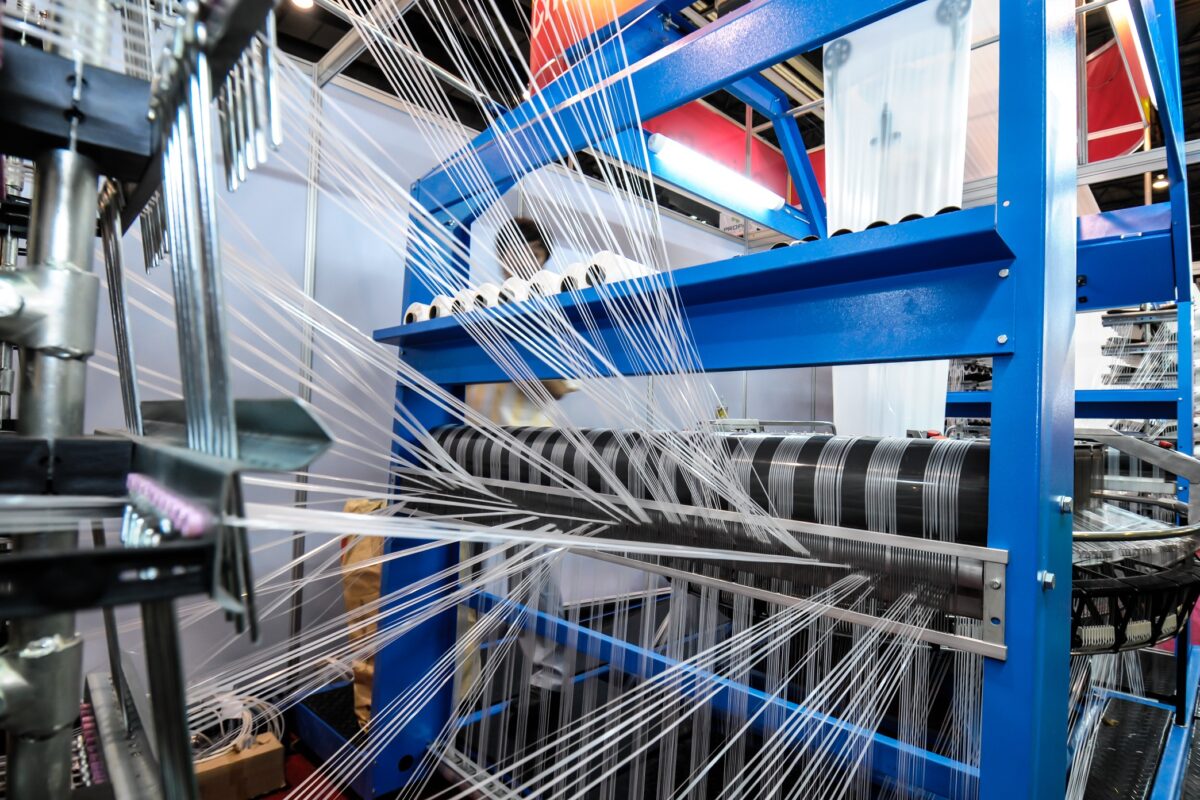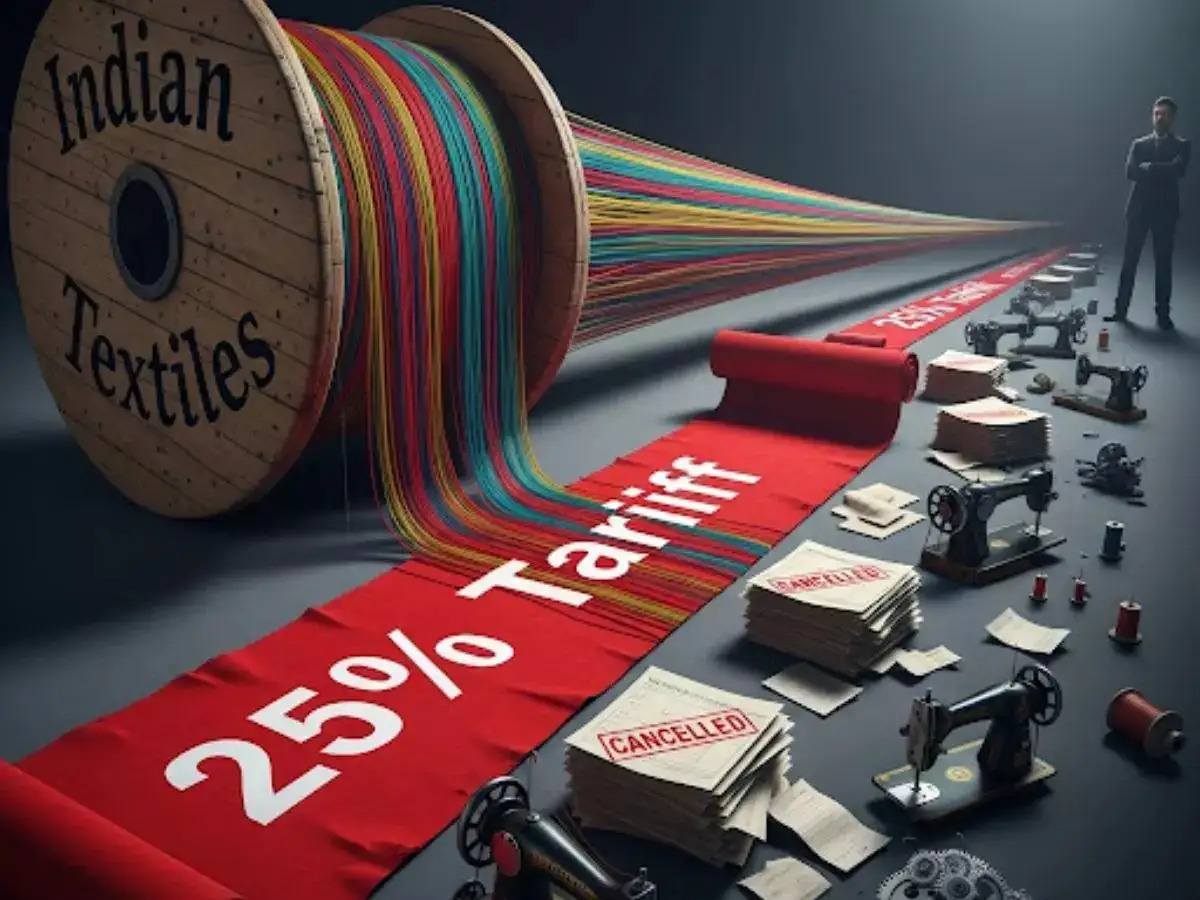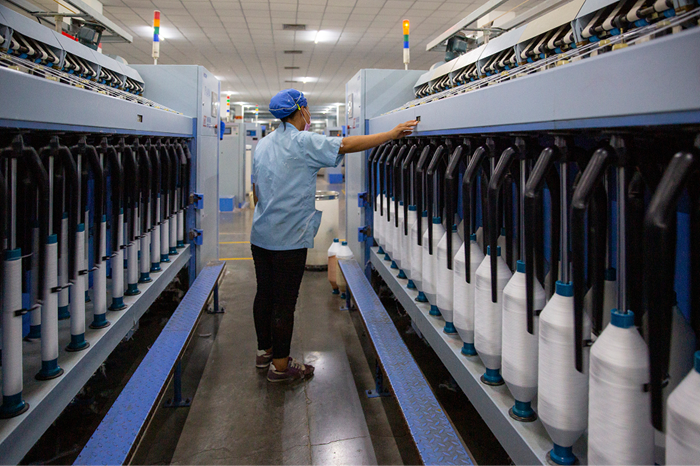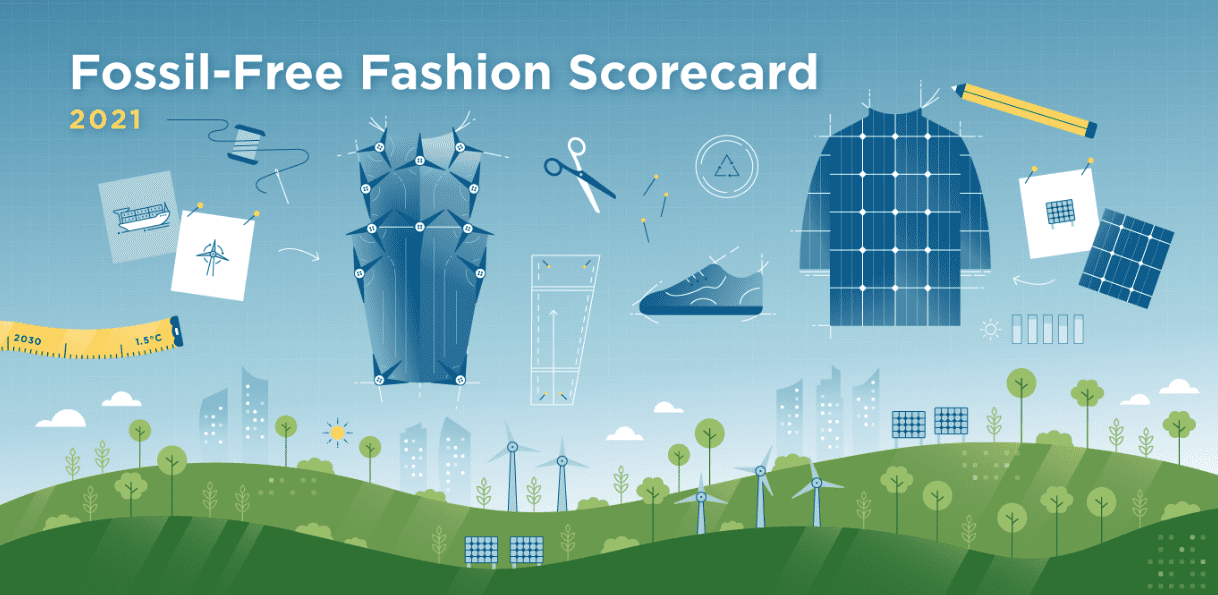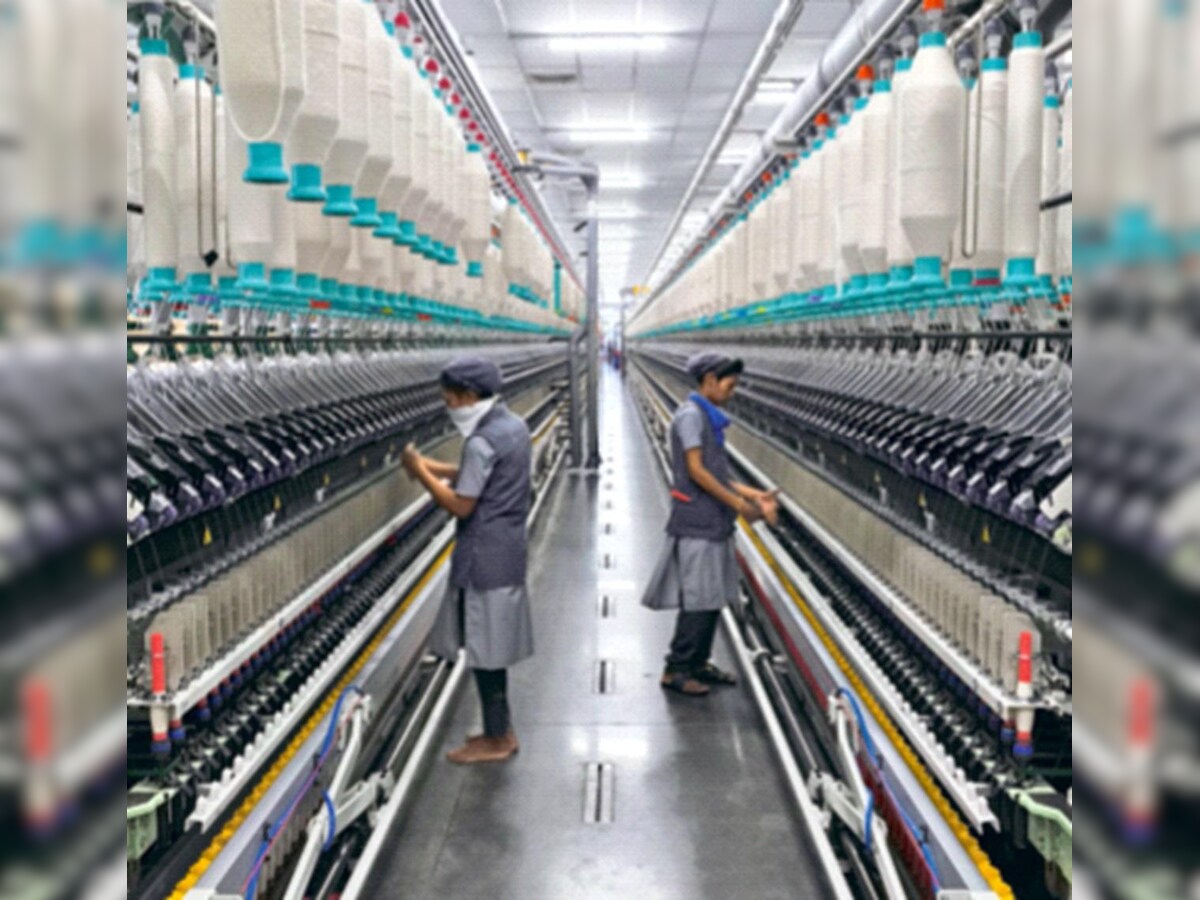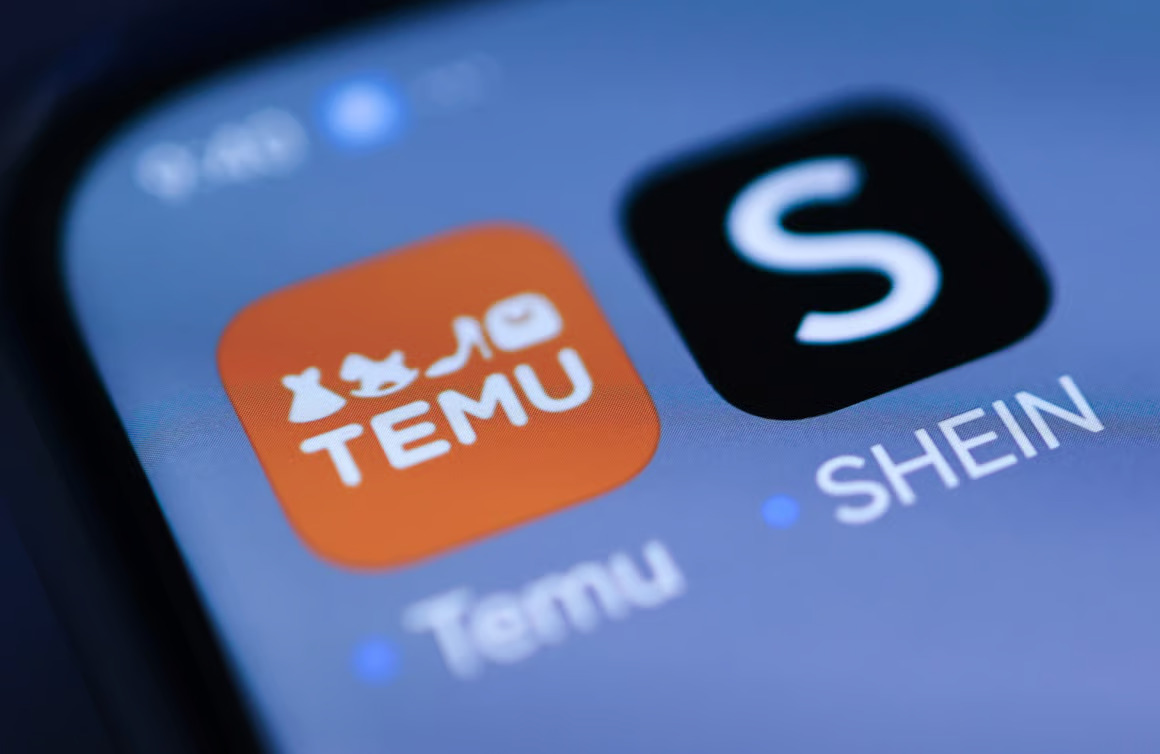FW
With apparel from Bangladesh made from fabric sourced out of China flooding the Indian market, the textile industry wants the commerce ministry to fine tune South Asia Free Trade Area (SAFTAs) rules of origin to make it mandatory for Bangladesh to use yarn and fabric produced in India in its garments to claim duty and quota-free exports. Even as textile exports from India continue to drop, there has been a surge in imports of textile products, post GST.
Data released by the Export Promotion Bureau of Bangladesh says India’s imports of garments from Bangladesh rose by 66 per cent year-on-year (y-o-y) to $111.3 million during July-December 2017, while knitted apparel imports from Bangladesh spiralled upward by 77 per cent y-o-y to $36.5 million between July and December 2017, woven apparel imports went up by 62 per cent y-o-y to $74.8 million.
Prabhu Dhamodharan, convenor, Indian Texpreneurs’ Federation (ITF) asserts, Tweaking SAFTA rules of origin to make the use of yarn and fabrics of Indian origin mandatory for allowing duty-free, quota-free market access will prevent China from taking undue advantage of a facility that is meant for poor, least developed countries (LDCs). At the same time, it will give a boost to India’s export of yarn and fabrics to Bangladesh and other LDCs, which at present are being supplied by China. India will not be the first country to impose such sourcing restrictions for allowing duty-free import of apparel. The US has imposed sourcing restriction under North American Free Trade Agreement (NAFTA) for accepting duty-free import of garments from Mexico and other NAFTA members. India permitted duty free import of readymade garments from Bangladesh under SAFTA in 2006. Earlier, this facility was limited to 8 million pieces per annum. This restriction was removed in 2010 which correspondingly resulted in imports from Bangladesh rising consistently.
Bangladesh imports Chinese fabric, converts them into garments using its cheap labour and exports them to India without paying any duties.Thus, this unilateral duty free market access given to Bangladesh is actually facilitating backdoor entry of Chinese textiles into India.
Denim ‘fur’— not the real fur — is the latest fashion trend to be seen on catwalks. Fashion designer Tiziano Guardini in a joint venture with ISKO Creative Room is set to create the material, which has been manufactured using certified organic cotton and pre-consumer recycled cotton. The denim ‘fur’ doesn’t look like real fur, ISKO — the world’s largest producer of denim — is of the view that this new material can be used to enhance the look of apparel in the same way that real fur does. Fabio Di Liberto, brand director of ISKO, was reported to have said, “We believe that denim ‘fur’ can be a responsible, fun, hype and cruelty-free alternative to animal fur. Sustainability is a difficult concept, dynamic and multidimensional.
ISKO is working with its partners to raise awareness and to change the way people think about denim, within the industry but also with consumers.People on social media are all for the new cruelty-free material.
"I am so in love with the denim 'fur'. So creative and effective," someone posted on Instagram and shared by ISKO. Others say the designs are "very beautiful" and "wonderful".
Tiziano Guardini who is a strong believer in using sustainable materials explains, "I've always wanted to create fur alternatives and have in the past trialled a number of different looks - my first creation was made from pine needles! Western countries do not need to use animal furs but some fashion houses continue to do so. I'm hoping that by creating a sustainable alternative such as denim fur we will be able to show people that fur alternatives are just as beautiful and aesthetically pleasing as the real thing."
Bangladesh has 67 eco-friendly green buildings, the highest number in the world. The country’s apparel sector has a 13 LEED platinum and a total 67 certified green factories in platinum, gold and silver categories, the highest in the world. Bangladesh, the second largest readymade garment exporter in the world, has taken leading position in sustainable green industrialisation with the world’s several top ranked green factories.
Indonesia is the second largest, with 40 green factories, followed by India with 30 and Sri Lanka with ten. After independence in 1971, Bangladesh was held up as an example of a failed state. People were used to thinking of the Bangladesh readymade garment industry as a place of forced labor, child labor and small factories.
In recent years a silent revolution has taken place in the garment industry of Bangladesh. In South Asia, Bangladesh has taken the lead in green initiatives. The world’s highest rated LEED platinum denim factory, knit factory, washing plant and textile mill all are situated in Bangladesh. It’s expected about 10 per cent of the total readymade garment sector in the next decade will use green technology. Bangladesh’s readymade garment sector is a $28 billion industry.
Integrated textile manufacturing company Vardhman Textiles, has started hedging cotton on Multi Commodity Exchange (MCX) to manage the volatility in cotton prices. Cotton is the basic raw material for the textile industry and its price is influenced by domestic and international situations, largely following increasing globalisation and international trade.
During October 2016 and September 2017, cotton prices reached a volatility of 19.25 per cent (annualised) and with physical market size of cotton projected at around Rs 68,000 crore, the cotton industry faced annualised price risk of over Rs 13.000 crore.
Vardhman Textiles, part of the Vardhman Group, is one of the largest textile companies in India that manufactures cotton yarn and fabric for various applications — such as hand knitting yarn, machine knitting yarns, jerseys, sweaters, sarees, dress materials and carpets— with a capacity of over one million spindles, amounting for 4 per cent of the country’s yarn production, 1320 looms for weaving of fabrics and 180 million meter per annum of fabrics processing capacity. It is also the second largest producer of sewing threads and the market leader in hand knitting yarn in the country.
Mrugank Paranjape, MD & CEO, MCX says they are glad to serve Vardhman as the platform of choice for their cotton price risk management obligations. Increased corporate participation has enhanced the quality and the process of information convergence in MCX cotton futures, thereby making it the hedging tool of choice for the cotton stakeholders in the country, besides transmitting signals to other major global markets in cotton trading.
IJ Dhuria, Director-Raw Materials, Vardhman Textiles explains, MCX cotton futures contract has been gaining strength, providing them an ideal platform to hedge our inventory and raw material risks effectively. “It has always been our corporate endeavour to best serve the investor interests besides strengthening our competitiveness.
I am happy to note that this risk management initiative of ours will help not only convey the same through our corporate governance report, but also provide for better compliance.”
World’s leading spandex manufacturer, South Korea’s Hyosung Corporation is looking to set up its first-ever spandex manufacturing facility in India by 2019. This strategic tactic is projected to ensure the company gets a foothold in the Indian market. The company has set aside $100 million as seed money for its new unit and is reportedly looking at acquiring a 40 hectares in the AURIC industrial complex near Aurangabad in Maharashtra.
Additional investments will be made as per market demand and growth projections. Hyosung has a presence in India through a trading company in New Delhi. Its spandex brand ‘Creora’ has around 60 per cent of the country’s market share. Currently, the brand’s key areas are Islamic wear such as the hijab, lingerie, sportswear, denim and diapers.
Once the new factory is operational, the company plans to also enter the high-value-added premium market. It is also looking at growing its market share to 70 per cent. Setting up its own spandex manufacturing unit in India is part of Hyosung’s global expansion strategy wherein the company will promote Hyosung Vietnam as the global base for making core products (spandex and tire cords) to tap Europe and Asia, whilst Hyosung India will focus on the big domestic market.
The country’s current spandex manufacturing units are local companies that has a monopoly in this segment. Hyosung feels it has a significant chance of success as its internationally-acclaimed differentiator is function and quality and once operational, it expects profits to flow.
It does come as a surprise to trade analysts that the company has chosen to set up manufacturing facilities in India at a time when the country’s spandex market is on a high. Growing by an annual average of over 12 per cent, the market size is pegged at $200 million by 2020.
State Textile Minister Satyadev Pachauri disclosed the recently-concluded two-day UP Investors Summit in Lucknow, UP, saw the signing of around 29 MoUs valued at Rs 7,436 crores in the textile sector. The Uttar Pradesh government had announced all necessary help to investors and is creating a four-member committee to ensure they can resolve issues in a timely manner. The Textile Commissioner himself will head the committee.
Once operational, over five lakh people are expected to gain employment in UP’s textile and garment manufacturing industry. The 2018 edition of the UP Investor Summit was organised on February 21 and 22 with a key focus on attracting investments in high potential trade segments in UP including textiles and garments. The event saw heads of states and Governments, leaders from the corporate world, heads of international institutions and academia from around the world gather together to further the aim of economic development in the state.
It may be noted that the state became a ‘collateral damage’ post GST implementation that led to shutting down of numerous carpet manufacturing units. The carpet industry in India is currently pegged at around Rs 3,000 to 4,000 crores of which over two-thirds come from the Bhadohi-Mirzapur-Varanasi-Gopiganj-Khamaria region. In December last year, the state government approved the ‘UP Handloom Garment Policy 2017’. The approval of the policy has brought relief to the industry. The huge investment that the state has attracted will only be beneficial if can implement a strategic execution plan.
Growth in India’s factory activity slowed to a four-month low in February as new orders eased and weighed on output after manufacturers raised prices at the fastest pace in a year. This suggests retail inflation could continue to pick up over coming months, pressuring the Reserve Bank of India to raise interest rates despite concerns that tighter policy could weigh on economic growth.
Cost inflation accelerated to the sharpest since February 2017, adding to expectations that inflationary risks will continue over the coming months. While retail inflation eased in January from a 17-month high in the prior month, price rises are still above the RBI’s medium-term target of four per cent on rising energy costs and expectations for an increase in rural spending by the government.
The new orders sub-index, an indicator of domestic and export demand, fell to 52.3, its lowest since October. That is well below the long-run mean average of 57.1 for orders and marked the second consecutive month it has fallen. Export order growth, while pulling back slightly, was still solid.
While firms remain optimistic about future output, the world’s seventh-largest economy has not completely overcome the disruptions to demand from a ban of high-value currency notes in November 2016 and the implementation of GST.
Swedish multinational clothing-retailer H&M, is pushing the boundaries of what we can expect from sustainable fabrics with its seventh eco-friendly conscious exclusive collection. This range is described by H&M as “exquisite, premium pieces that celebrate the new season and showcase the increasing possibilities of sustainable fashion with a focus on development and innovation.” This year they have partnered with, a global producer of nylon yarn, in paying tribute to the Arts and Crafts movement in Sweden and features the new sustainable materials recycled silver and ECONYL, a 100 per cent regenerated fibre from fishnets and other nylon waste.
This partnership marks the first time that the Conscious Exclusive collection features pieces made from ECONYL yarn, Aquafil’s regenerated nylon made also from waste diverted from landfills and oceans. The collection’s release is the beginning of a long-awaited collaboration between two industry leaders with a shared vision for a more sustainable future.
H&M has made a commitment to cleaning up their act. Last year, they unveiled a new sustainability mission, which aims to infuse an eco-ethos into every aspect of the business. The six-piece line of jackets, skirts and pants is made from 20 per cent recycled materials pulled directly from the unwanted clothes customers have been dropping off. The other 80 per cent is comprised of organic cotton from the company's Better Cotton Initiative program.
Turkey-based Gamateks, which specialises in circular knitting has three of its fabrics feature Invista’s Lycra fiber innovations. It has developed a special black circular knitted legging fabric called Soft Comfort 2. Made with Lycra Soft Comfort technology, this fabric delivers exquisite comfort and fit and is meant for premium brands and their consumers. Another fabric called Next400 contains Lycra T400 fiber and Coolmax technology to keep athletes cool and dry. This innovative fabric can be used from ready-to-wear to stretch active wear collections. Wooderer is another fabric with Lycra T400 fiber, offering Coolmax technology benefits. It is a viscose and Lycra T400 pique fabric blend developed primarily for men’s golf and tennis lines.
Invista is a leading integrated producer of polymers and fibers, primarily for nylon, spandex and polyester applications. With a business presence in over 20 countries, Invista has a wide portfolio of some of the most recognized brands and trademarks in their respective industries including: Coolmax, Cordura, Lycra, Polarguard, Solarmax, Supplex, Tactel, and Thermolite.
Gamateks is a vertically integrated fabric and garment producer. It started in 1985 with production and processing of cotton. In 1995, a dyeing-finishing-printing unit was established. Gamateks has an integrated yarn facility.
Bangladesh is the world's largest raw cotton importer as it uses this cotton to manufacture yarn and fabric for the readymade garment (RMG) industry. What is generally forgotten it that it pays a phenomenal $3.0 billion annually as import bill for the natural fibre. It goes without saying that it does a good job of producing quality apparel for the export market; however, what is worrying is the non-availability of huge quantities of domestic cotton required to produce finished RMG. Initially, the problem was very serious as exporters had to depend on imported fabric for both woven and knit apparel.
However, in the last two decades the situation has morphed post the emergence of many composite textile mills to make up for the non-availability of fabric. Currently, domestic production has increased so that about eighty per cent of fabric required for apparel manufacturing is sourced locally.
China still leads the pack as the world’s largest cotton consumer despite its reduced cotton production/import in recent times. As Chinese stock of cotton is being cut back significantly, the price of cotton is increasing. On the other hand, the US, the largest cotton exporting country in the world, is creating an artificial supply shortage by cutting back on the cultivation of the natural fibre.
Today, Bangladesh is the fifth largest cotton consumer in the world and its cotton import is estimated to grow beyond 7.0 million bales in 2017-18. In the year ago period, it was nearly 7.0 million bales. The country’s import bill has thus been skyrocketing and as per recent report in a local daily, it has gone beyond $3.0 billion.
Apparel products made of cotton has been the mainstay of Bangladesh's exports over the decades. Many exporting countries that do not produce enough raw cotton have shifted to manmade fibres such as filament, polyesters and viscose. Following this model, one can see a paradigm shift in international trends in the use of manmade and natural fibres. Following the exponential rise in the use of manmade fibre increasing its ratio to more than 70 per cent internationally, it goes without saying that apparel exporters are forced to diversify their product range by increasing the use of manmade fibre.

